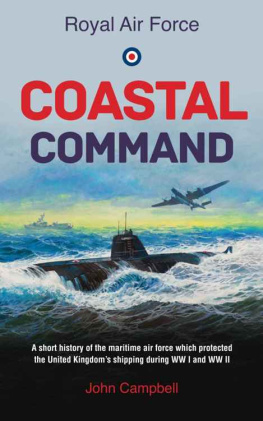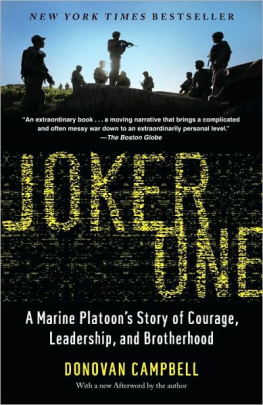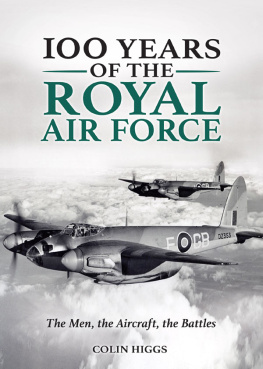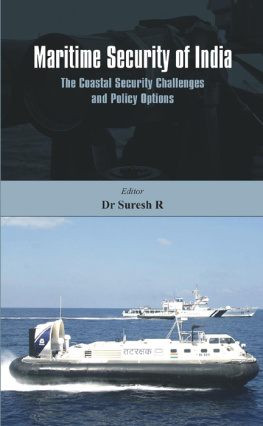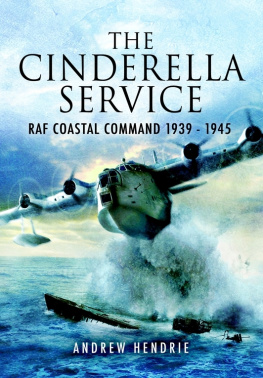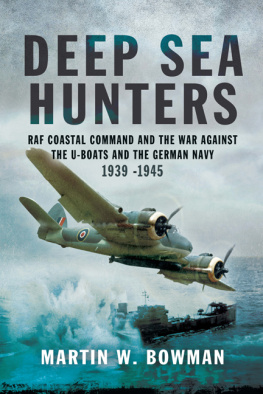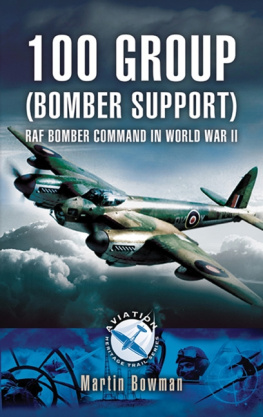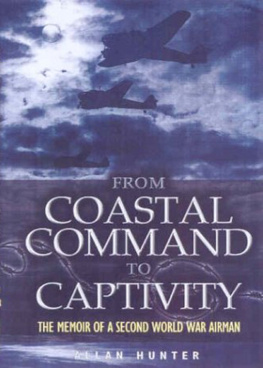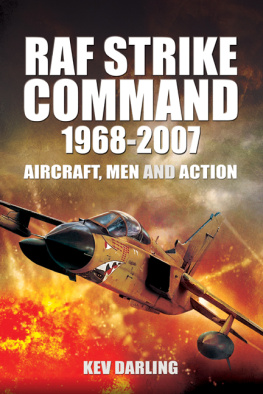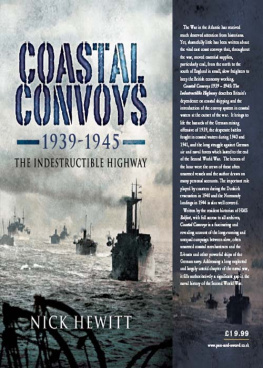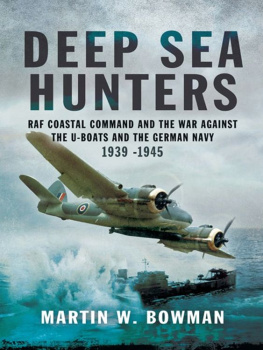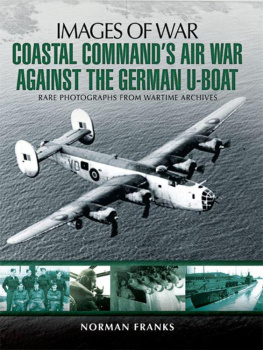
Coastal
command
A short history of the maritime air force which protected the United Kingdoms shipping during World War I and World War II
John Campbell

A short history of the maritime air force which protected the United Kingdoms shipping during World War I and World War II
MEREO
CIRENCESTER Published by Mereo

Mereo is an imprint of Memoirs Publishing
25 Market Place, Cirencester, Gloucestershire, GL7 2NXinfo@memoirsbooks.co.uk www.memoirspublishing.com
Royal Air Force Coastal Command All Rights Reserved. Copyright 2013 John Campbell
No part of this book may be reproduced or transmitted in any form orby any means, graphic, electronic, or mechanical, includingphotocopying, recording, taping or by any information storage orretrieval system, without the permission in writing from the copyrightholder. The right of John Campbell to be identified as the author ofthis work has been asserted in accordance with the Copyright,Designs and Patents Act 1988 sections 77 and 78.
The views expressed in this work are solely those of the author and donot necessarily reflect the views of the publisher, and the publisherhereby disclaims any responsibility for them.
ISBN: 978-1-909544-73-4
This book is dedicated to my wife Keeta, our son Jamie, ourdaughter Fiona, our son-in-law Colin, our grandchildrenRebecca and Dougal and to all air and ground crews ofCoastal Command, its antecedents and successors.
CONTENTS

Introduction
Chapter One
Chapter Two
Chapter Three
Chapter Four
Chapter Five
Chapter Six
Chapter Seven
Chapter Eight
Chapter Nine
Chapter Ten
Chapter Eleven Chapter Twelve Chapter Thirteen Chapter Fourteen Chapter Fifteen Chapter Sixteen Chapter Seventeen Chapter Eighteen Chapter Nineteen Chapter Twenty Chapter Twenty One 1943P. 256Chapter Twenty Two 1944P. 372Chapter Twenty Three 1945P. 464Chapter Twenty Four 1946P. 492Chapter Twenty Five The Strike WingsP. 498Chapter Twenty Six The Operational Training Units P. 515Chapter Twenty Seven Photographic ReconnaissanceP. 519Chapter Twenty Eight
Chapter Twenty Nine
Chapter Thirty
Bibliography
Epilogue
The Fleet Air Arm squadronsP. 523The American squadrons P. 525Coastal Cold WarP. 537
Battleship BrigadeP. 1
The submarine and the aeroplaneP. 15
Early daysP. 22
First World WarP. 34
ReorganisationP. 51
Maritime aircraftP. 67
Navigation of coastal aircraft P. 97
Coastal Command weaponsP. 110
TorpedoesP. 121
Coastal convoys, patrols and searchesP. 126
Maritime Patrol operating areasP. 130
Coastal search and patrolP. 133
Coastal notesP. 140
Radar and detection aidsP. 148
Coastal Signals OrganisationP. 159
Outbreak of warP. 163
World War Two, 1939 P. 168
1940P. 177
1941P. 188
1942P. 210
P. 550P. 552
INTRODUCTION

In the decades after the Second World War I served as aCoastal Command navigator and crew captain onShackleton aircraft in the Maritime Patrol role. Later, Iconverted to Nimrods. I became an Intelligence Officer atCOMAIRNORLANT, finally retiring in 1984 after 31years. Hence my desire to write this book. I hope it willshow the public the serious gap in this country's defenceoriginated by the Defence Review of 2010.
The work of Coastal Command was, and is, inconjunction with the Royal Navy, to keep the sea lanesclear. Its prime task in war time is to locate and destroyenemy submarines and enemy surface vessels and asubsidiary task is search and rescue, although FighterCommand, in the Second World War, carried out some ofthis work. During that War, photo reconnaissance cameunder its jurisdiction.
To carry out this work the Command was equipped withvarious aircraft. For anti-submarine work, flying boats suchas Saro Londons, Southamptons, Scapas, ShortSingapores, Rangoons, Stranraers and the land-based AvroAnsons were employed. For anti-shipping work, VickersVildebeeste torpedo bombers were used. In 1936 CoastalCommand had eight squadrons, increasing in 1937 tofourteen, in response to the deteriorating situation inmainland Europe. In 1938 there were another threesquadrons including the new Short Sunderland flying boat.In April 1938 the British Purchasing Commission went tothe United States and ordered 200 land-based LockheedHudsons. On 15 October 1938 the prototype BristolBeaufort torpedo bomber flew.
Coastal Command crews faced many problems duringtheir flights over the seas around the United Kingdom andin overseas areas. Firstly, there was the weather. High windscaused turbulence at the low altitudes at which the aircraftflew. Fronts passing through the area brought the cloudbase down to a low level and thus caused bad visibility.High sea states made detection of the enemy very difficult.In the winter there was snow and ice on the aircraft tocontend with and, of course, in the higher latitudes theweather was much worse. Such weather caused airsickness,although most aircrew could cope with this. Nevertheless,it was tiring.
Further, enemy submarines were difficult to find in theseconditions, as submariners would find the calmer stateunder the surface much more to their liking. Whilegenerally the weather was much better in the tropics,storms could be more violent and the heat brought its ownproblems, both in terms of aircraft performance andaircrew and ground crew fitness. Heat exhaustion, pricklyheat, malaria, dengue fever and other nasties were justsome of the illnesses affecting air and ground crew.Preparation for take off was always a problem, in that therewas no air conditioning and the crews were invariablypouring sweat and stripped to the waist.
In addition, in hot climates dangerous animals and othercreatures could be encountered.While most of these wouldkeep away from humans, there was always the surpriseelement involved in the one stumbling across the other. Itwas always wise to shake ones shoes out before puttingthem on.
Secondly there was the length of sortie. Aircraftendurance was of the order of six hours until the SecondWorld War, when the need to close the mid-Atlantic gapgenerated the production of aircraft such as theConsolidated Liberator with the capability of flight timesof up to 18 hours. Sergeant Richard Thomas of No 86Squadron, when describing the attack on U-43 on 20 July1943, states: Gone were the flights of short duration inthe Lockheed Hudson, or the longer trips in the Fortress.Now we were in the air for seventeen to eighteen hours ata stretch, flying round the clock. At the height of the battleover the Bay, from May to July 1943, we had got ourselvesinto a steady rhythm of being airborne for some fifty hoursor so in every five days, spending almost half of our wakinglives within the confines of the huge Liberator which hadnow become our home.
Much of this book is taken from other authors and Ihope that I have acknowledged them all.Without them thiscould not have been written. I wanted to show the publicthe history of Coastal Command, which is little known,and the great contribution it has made to this nation.
Next page
